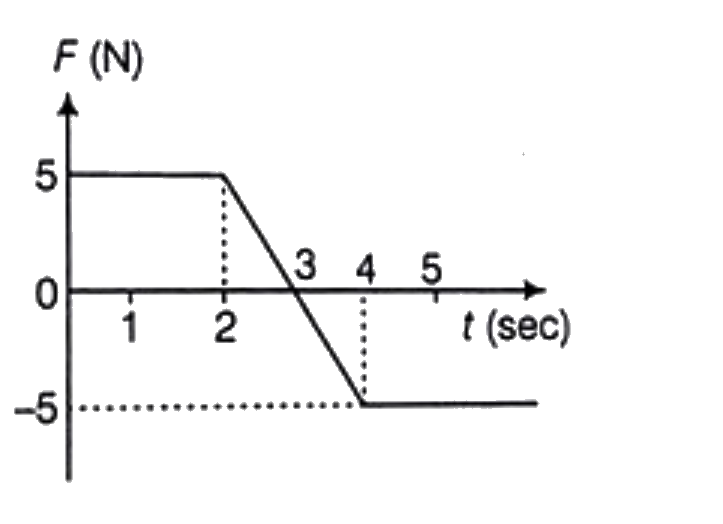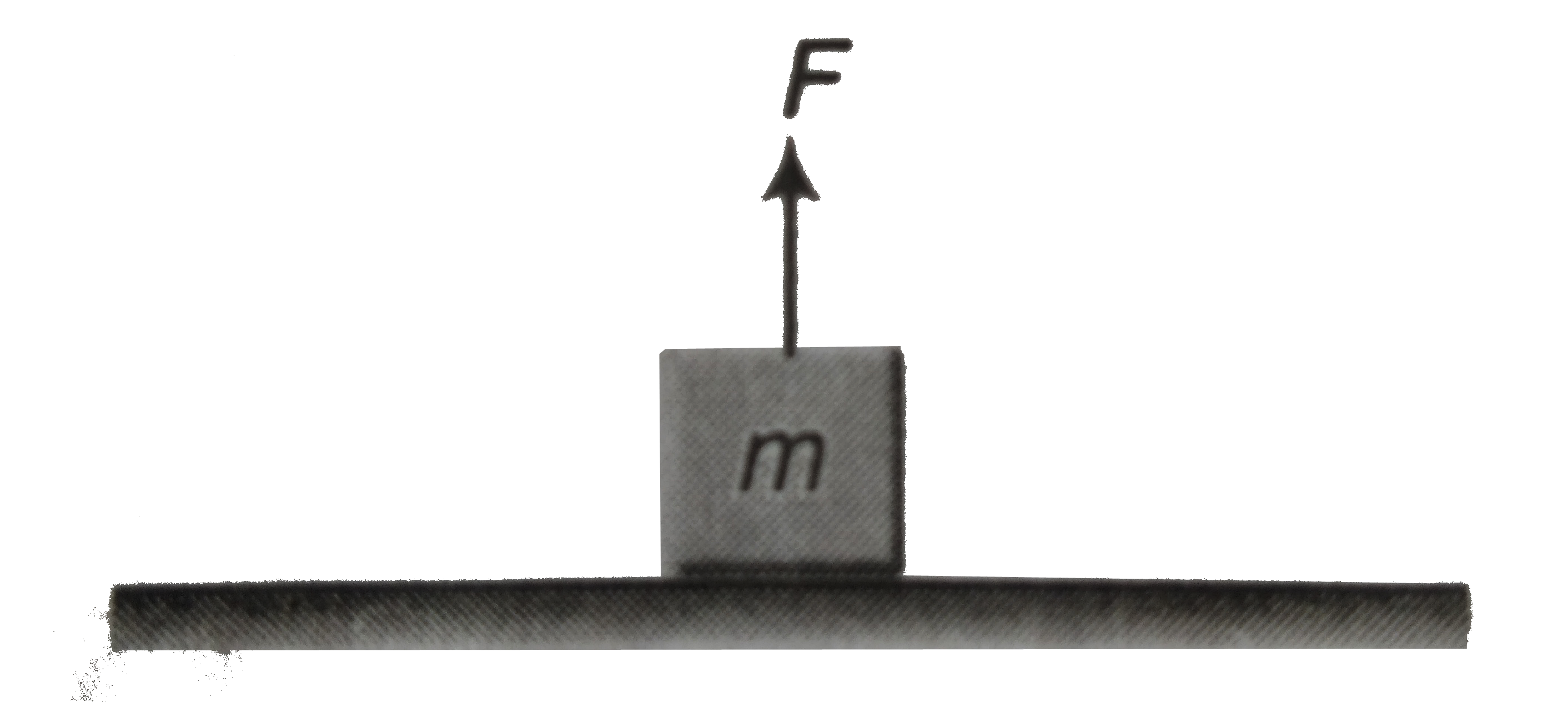A block of mass 5 kg is moving with a speed of 8 m/s. A force of 10 N is applied on it for 3 s . Find the final speed of the block if the force is applied (i) along the motion , (ii) opposite to the motion and (iii) normal to the initial direction of motion of the block.
To solve the problem step by step, we will analyze each scenario where a force is applied to a block of mass 5 kg moving at an initial speed of 8 m/s. The force of 10 N is applied for a duration of 3 seconds.
Given Data:
- Mass of the block (m) = 5 kg
- Initial speed (u) = 8 m/s
- Force (F) = 10 N
- Time (t) = 3 s
Step 1: Calculate the acceleration
Using Newton's second law of motion, we can calculate the acceleration (a) produced by the applied force.
F=m⋅a⟹a=Fm=10N5kg=2m/s2
Step 2: Analyze each case
Case (i): Force applied along the motion
When the force is applied in the same direction as the motion, the final speed (v) can be calculated using the equation:
v=u+a⋅t
Substituting the values:
v=8m/s+(2m/s2⋅3s)=8+6=14m/s
Case (ii): Force applied opposite to the motion
When the force is applied in the opposite direction to the motion, the final speed is calculated as:
v=u−a⋅t
Substituting the values:
v=8m/s−(2m/s2⋅3s)=8−6=2m/s
Case (iii): Force applied normal to the initial direction of motion
In this case, we need to consider the vector nature of motion. The initial velocity can be represented as:
→u=8^im/s
The acceleration is perpendicular to the initial direction, so we can represent it as:
→a=2^jm/s2
Using the vector equation for final velocity:
→v=→u+→a⋅t
Substituting the values:
→v=8^i+(2^j⋅3)=8^i+6^jm/s
To find the magnitude of the final velocity:
|→v|=√(8)2+(6)2=√64+36=√100=10m/s
Final Answers:
1. Final speed when force is applied along the motion: 14 m/s
2. Final speed when force is applied opposite to the motion: 2 m/s
3. Magnitude of final speed when force is applied normal to the motion: 10 m/s
- Mass of the block (m) = 5 kg
- Initial speed (u) = 8 m/s
- Force (F) = 10 N
- Time (t) = 3 s
Using Newton's second law of motion, we can calculate the acceleration (a) produced by the applied force.
When the force is applied in the same direction as the motion, the final speed (v) can be calculated using the equation:
When the force is applied in the opposite direction to the motion, the final speed is calculated as:
In this case, we need to consider the vector nature of motion. The initial velocity can be represented as:
1. Final speed when force is applied along the motion: 14 m/s
2. Final speed when force is applied opposite to the motion: 2 m/s
3. Magnitude of final speed when force is applied normal to the motion: 10 m/s
Topper's Solved these Questions
- BOOK - AAKASH INSTITUTE ENGLISHCHAPTER - LAWS OF MOTIONEXERCISE - Illustration7videos
LAWS OF MOTION
- BOOK - AAKASH INSTITUTE ENGLISHCHAPTER - LAWS OF MOTIONEXERCISE - TRY YOURSELF69videos
LAWS OF MOTION
- BOOK - AAKASH INSTITUTE ENGLISHCHAPTER - KINETIC THEORYEXERCISE - EXERCISE (ASSIGNMENT) SECTION - D Assertion - Reason Type Questions10videos
KINETIC THEORY
- BOOK - AAKASH INSTITUTE ENGLISHCHAPTER - MAGNETISM AND MATTER EXERCISE - ASSIGNMENT (SECTION D)26videos
MAGNETISM AND MATTER
Similar Questions
Knowledge Check
- Question 1 - Select One
A body of mass 4 kg is moving with momentum of 8kgms−1. A force of 0.2 N acts on it in the direction of motion of the body for 10 s. The increase in kinetic energy is
A10 JB8.5 JC4.5 JD4 J
A block of mass 1 kg in kept on a rough horizontal surface with μs=0.1 . A force of 0.5 N is applied as shown in the figure. What is the frictional force applied by ground on the block?
 View Solution
View SolutionA body is moving with a velocity 5m/s along a striaght line.A force of 10N is applied to the body perpendicular to the line of motion. If the body is of mass 2kg, then the acceleration of the body along the initial straight line of motion is :
View SolutionOn an object of mass 1 kg moving along x-axis with constant speed 8 m/s, a constant force 2 N is applied in positive y-direction. Find its speed after 4 seconds.
View SolutionA block of mass 2 kg rests on a horizontal surface. If a horizontal force of 5 N is applied on the block, the frictional force on it is (take,uk=0.4,μs=0.5)
View SolutionA block of the mass of 1 kg is moving on the x-axis . A force F acting on the block is shown . The velocity of the block at time t = 2 s is - 3ms−1 what is the speed of the block at time t = 4 s?
 View Solution
View SolutionA block of mass m=2kg is pulled by a force F=40N upwards through a height h=2m. Find the work done on the block by the applied force F and its weight mg. (g=10m/s2).
 View Solution
View SolutionA block of mass m=2kg is pulled by a force F=40N upwards through a height h=2m. Find the work done on the block by the applied force F and its weight mg. (g=10m/s2).
 View Solution
View Solution

